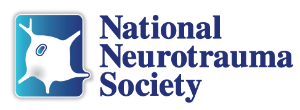Main Menu
Description & Objectives S08
SESSION TITLE
Use of Alternative Neurotrauma Models in Defining and Assessing Functional Outcome Measures Preclinical Models
DESCRIPTION
Use of traditional preclinical models of traumatic brain and spinal cord injury, such as rodent models, has yielded invaluable data for understanding mechanisms of injury and identifying potential therapeutics to improve functional outcomes in the clinical population. Recently, alternative models have been explored to both refine and expand this knowledge. This session will highlight use of some of these alternative models. For example, neuropathological analysis has yielded insight into the importance of tau-positive accumulation, using the woodpecker as model of repetitive head acceleration and deceleration. Similarly, porcine models serve as translational intermediary models of both traumatic brain and spinal cord injury for evaluation of functional indicators of sensory function and pain. The fruit fly (Drosophila melanogaster) has also evolved as an effective model for examining not only single cell function after brain injury, but also the importance of genetic variability in influencing the severity of secondary injury responses, such as tissue barrier function, energy homeostasis, and microtubule function. Use of such alternative models provides novel insight into injury mechanisms and methods to explore functional interventions, that might otherwise be prohibitive in conventional preclinical models.
EDUCATIONAL OBJECTIVES
At the conclusion of this session, attendees will be able to:
- Recognize the importance of alternative models of neurotrauma and their contribution to the understanding of neuropathological alterations after traumatic brain injury.
- Interpret and recognize the use of porcine models of traumatic brain and spinal cord injury as translational intermediaries with functional outcome measures.
- Describe data that support genetic diversity as a risk factor for secondary injuries following traumatic brain injury
- Understand how the effects of traumatic brain injury can be modeled at the single cell level and describe how neurons functionally change transcription and chromatin accessibility acutely post-injury.
